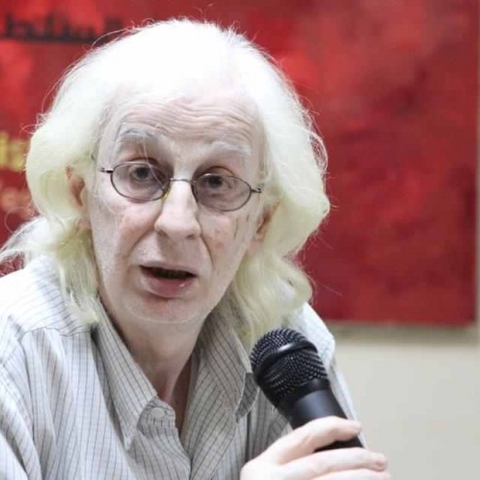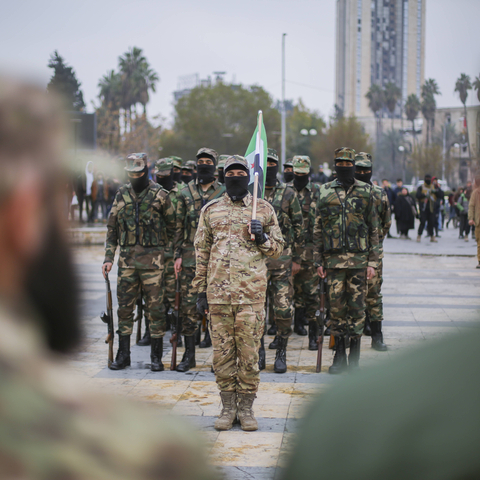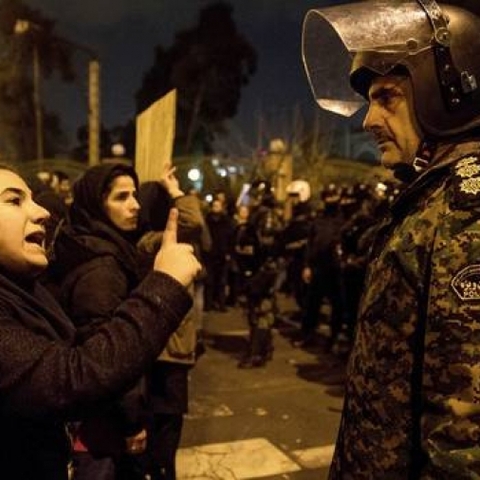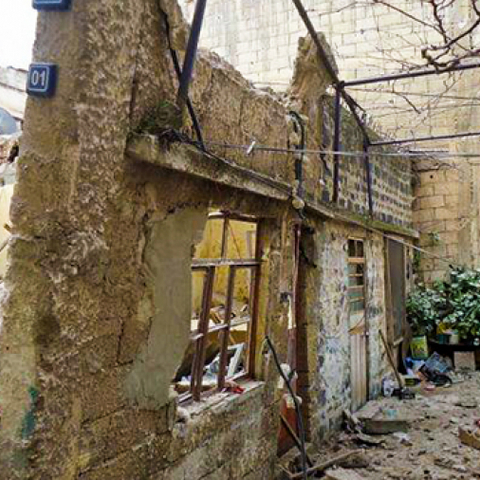Lifting Sanctions and the Challenges for Syria’s New Leadership – Reconstruction in a Complex Environment
On Tuesday, May 13th, 2025, U.S. President Trump announced lifting longstanding sanctions during an investment forum in Riyadh. Triggered by regional diplomacy and strategic financial support from Gulf states, the decision has generated optimism within Syria and across the region. Certainly, this move is a turning point for Syria’s economic and political scene. As the country faces the monumental task of post-war reconstruction, lifting sanctions is necessary. The current Sharaa government, burdened by limited institutional capacity and a composition that still includes loyalists from the old regime, raises serious questions about its ability to govern, reform, and lead the reconstruction process. While economic revival may bring short-term relief, the risk of a neoliberal recovery model that deepens inequality looms large.
A New Chapter in Syria’s Diplomacy
On the morning of 13 May, the red and white billboard in Umayyad Square read “Shukran/thanks Qatar.” Unlike the era before the fall of the Assads, political slogans are rare in the streets of contemporary Damascus. Only the flag of the new Syria is visible throughout the city. Many passers-by were surprised to see the billboard and its unmistakable political message of gratitude. In April, Saudi Arabia and Qatar repaid Syria’s debt to the World Bank, totaling roughly $15 million, which is enough reason to be thankful.
This was one of several steps taken by supporters of the “New Syria” in the Arab world to normalize Syria’s relationship with a key financial institution. Yet, Syrians were already focused on the next major opportunity for progress: Trump’s visit to the Gulf—especially to Saudi Arabia, which many hoped would usher in a new engagement phase. Until that moment, the chances for Ahmed Sharaa—a former leader of Syria’s local al-Qaeda branch and de facto ruler of Idlib since 2017—to engage politically and economically with the wider international community beyond his initial supporters (like Turkey) and change the status quo remained slim. But Sharaa and his foreign minister had done their homework. A visit by Syrian Foreign Minister Assaad Hassan al-Shibanii to Washington in April was described as “a diplomatic mission long on ceremony but short on results”, but it appears to have laid the groundwork for recent developments. In February, additional visits to Gulf states and a key meeting between Sharaa and Saudi Arabia’s de facto leader, Mohammed bin Salman (MBS), paved the way for the long-anticipated encounter between the U.S. President and Gulf monarchs, aimed at lifting economic sanctions.
Trump announced during a speech at an investment forum in Riyadh his intention to lift sanctions on Syria. This was followed by a bilateral meeting between Trump and Sharaa on 14 May. Trump described Sharaa as a “young, attractive guy… tough guy… a real leader.” Within 24 hours, the atmosphere in Syria shifted dramatically. Celebrations broke out not only in Umayyad Square but across the country, as Syrians welcomed the potential for economic revival.
So what’s the deal? To understand the current situation, one must examine the origins of the sanctions, assess the situation on the ground, and reflect on the road ahead.
Background of the Sanctions
A series of economic sanctions and restrictions were imposed on Syria by various actors (the EU, the US, the UK, and the Arab League). These began in December 1979, when the U.S. designated Syria as a State Sponsor of Terrorism due to its support of terrorist groups. More severe sanctions followed after 2011 in response to the Syrian government’s repression during the civil war. These measures affected third parties as well and functioned as a comprehensive embargo. U.S. secondary sanctions remained limited until 2020, when the Caesar Act was enacted. Named after the horrific images of torture victims smuggled out by a police photographer known as Caesar, the Act aimed to prevent state violence and promote political reform.
Although the sanctions include limited humanitarian exemptions, their broader economic impacts have obstructed many aid efforts. The sanctions’ toll on Syria since 2011 has been profound. Banking operations are heavily restricted, transforming Syria into a cash-based economy. International travel is difficult, while trade and foreign investment have plummeted. Illicit activities, such as the captagon trade, have proliferated.
Post-Assad, Syria now faces estimated reconstruction costs of $250 to $400 billion. According to the United Nations Development Programme (UNDP), nine out of ten Syrians live in poverty, one-quarter are unemployed, and Syria’s GDP has shrunk to less than half its 2011 value. A February UNDP report projected that it could take over 50 years to return to pre-war economic levels at current growth rates, urging significant investments to accelerate recovery.
The Current Situation
Prior to the U.S. President’s regional visit, media reports indicated that Sharaa had proposed the construction of a Trump Tower in Damascus, following the announcement of the first Trump Tower in the Middle East in Dubai (March 2025). Additionally, reports surfaced that Syria had offered U.S. companies access to oil and gas resources, and that negotiations with Israel were under discussion. While Sharaa confirmed that security-related talks were underway through intermediaries, he made no statements about formal diplomatic relations.
A “special operation” by Israeli forces and Mossad inside Syria to recover the remains of a soldier missing since 1982, alongside Israel’s regular airstrikes and continued occupation in southern Syria, points to an unusual moment of strategic convergence, or at least a pause in hostility.
Given Hezbollah’s defeat and shifting Gulf perspectives under the Abraham Accords, the idea of peace with Israel is no longer far-fetched. However, many remain skeptical that Syria will join the Abraham Accords.
The primary goal of Trump’s trip was not Syria, but securing major economic contracts with Gulf nations. He emphasized that the decision to lift sanctions came at MBS’s request. His real focus lies in economic partnerships with the wealthy Gulf states.
What Lies Ahead
The process will continue in follow-up meetings in Turkey between Secretary of State Marco Rubio and Syrian Foreign Minister al-Shibani and beyond. Trump is leveraging the situation to reignite economic ties, particularly with the Gulf. Issues like Gaza, the West Bank, and Yemen were absent from his agenda. Trump is shaping a new economic dynamic in and with the region. While Damascus may never see “Shukran Trump” billboards, the economic mood is optimistic. For millions of Syrians abroad, remittance channels are opening. Business relations can now resume, and Syria may finally move away from a purely cash-based economy. Street-side saraf (money changers) may soon become obsolete. Formal banking services and direct international assistance are within reach.
Given the scale of need, the conditions for economic improvement are encouraging. But can the new Syrian state seize this opportunity? Sharaa’s cautious leadership will face immense pressure from diverse actors with competing interests. Old and new capitalist forces will challenge the state’s capacity to manage a just transition. Dismantling the corrupt networks that favored Assad loyalists and kept key industries in Alawite hands will not be easy1 .Parts of the old elites remain and will demand their share.
As seen in Iraq, Afghanistan, and Lebanon, post-war reconstruction often breeds corruption and undermines good governance. Syrian business leaders are already pushing for the return of import tariffs, as cheap Turkish and Chinese goods flood markets and outcompete local producers. Who will lead the planning? The current administration, often staffed by loyalists from Idlib or the old regime, may be overwhelmed. Visionary leadership is urgently required to create robust structures, institutions, and strategies.
The new Syrian government is trying to restore more ties with international financial institutions and is relying on wealthy Gulf States to finance reconstruction and economic revival. This is a formidable task for a fragile, war-torn nation. Western aid, though less substantial than what Iraq, Afghanistan, and Lebanon received, will also become available.
Although lifting the sanctions was necessary, the ensuing neoliberal wave could deepen socio-economic inequalities and overwhelm public institutions. Yet without economic progress, political achievements like freedom of speech and pluralism will remain hollow. A Trump Tower in Damascus may not materialize, but regional investment and localized economic activity offer a realistic path forward. Whether the U.S. vision—peace with Israel and the defeat of terrorist groups—will come to pass is uncertain. Syria’s priority is economic recovery, not transitional justice, social cohesion or good governance. Shukran/Thanks to Trump, Qatar, and Saudi Arabia.
[1] Publisher’s note: While the Syrian economy under Bashar al-Assad has often been associated with Alawite dominance, it was in fact cross-sectarian in nature, involving elites from various sectarian backgrounds, including prominent Sunni figures.
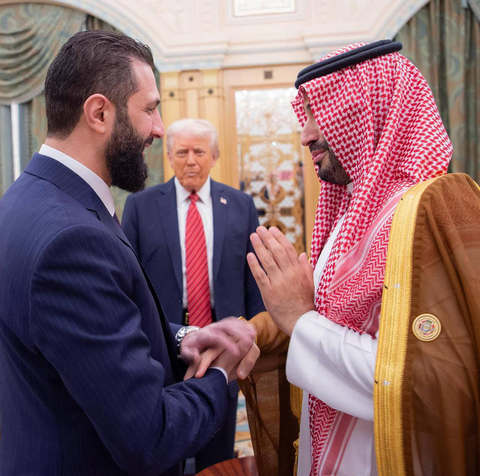
IMAGO / APAimages
